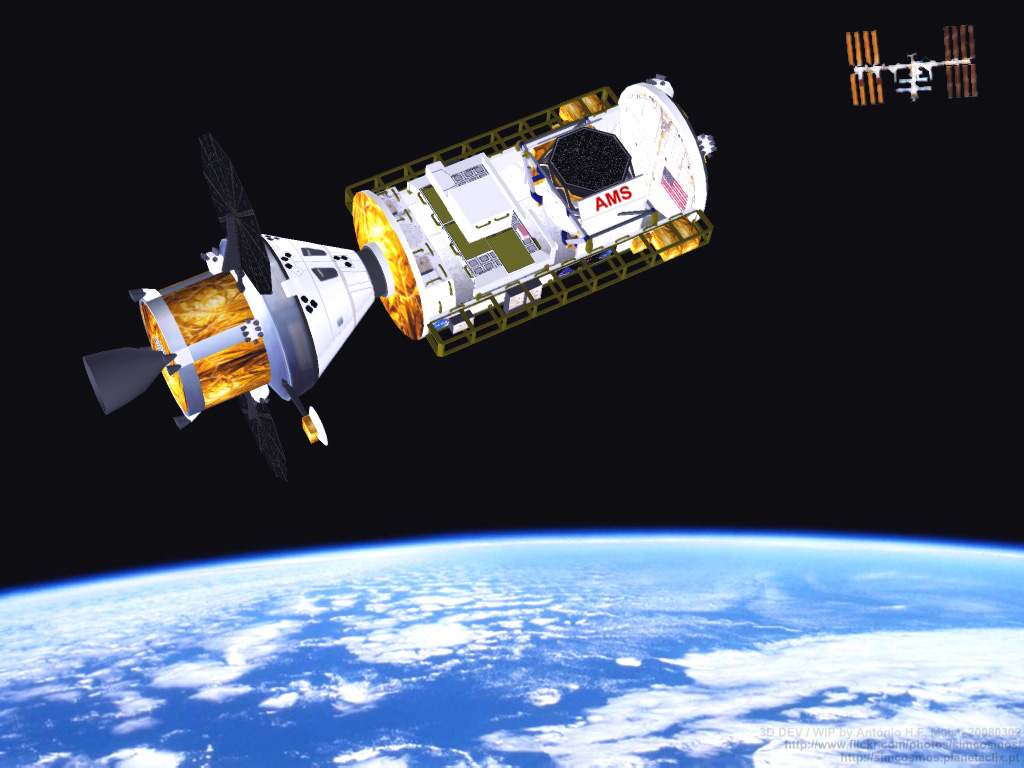Despite my pessimistic statement, I was able to perform some other work in these days. Here, Starchaser laboratory study model...
5.
This is far more promising than the previous idea (that I have not shown).
The Starlab
raison d'etre is to provide an outpost created with less and larger elements than a classic modular station (ISS or Mirai style), and to obtain them from existing hardware in order to keep down the hypotetical costs and construction times, so I wanted to return at my previous roots and to search another rocket stage to convert.
My choice fell on the Neptune-1B cryogenic second stage. A reasonably sized stage that can provide a spatious orbital facility, altough smaller than the big Challenger expansion module.
So I took the stage, thrown away the LOX tank an kept the LH2 tank, filling it with all the necessary equipments. At front, the Vittorio's mini Canadarm and the exposed facility with the related airlock for samples and a porthole.
Laterally, I've opened some other windows. At back, the connection port and a small service module that I've equipped with some deployable solar panels.
The total pressurized volume is almost exactly 150 cubic metres. As usual, the real free space is much smaller because of the various racks installed, let's say one half of this.
Some images.
Overview:

The internals through the windows:

The small airlock and the porthole. The exposed facility is not complete.

Cutaway. All the consolles are identical with the exception of the last at right, that I've equipped with a small joystick for the canadarm control.

Hypothesis of the station assembled with the various modules. The Deep Space 2 additional shelter module is not shown because is in doubt.
Blue: the Starlab core station. Green: Challenger MPEM (MultiPurpose Expansion Module). Red: Starchaser laboratory.

Unlike the previous modules, Starchaser hasn't autonomous flight capability and because of its 5.6 meters width and some 20 tons weight, don't fit anymore in the Eridanus cargo bay. So I have to study a way to reach the space station.








